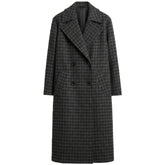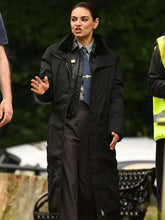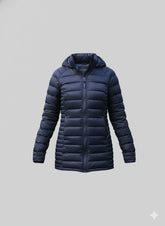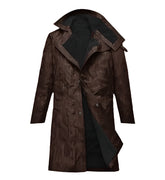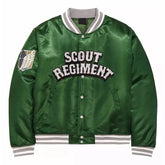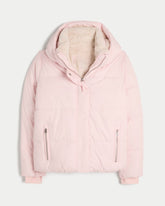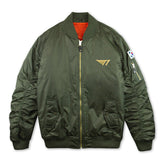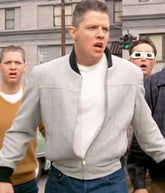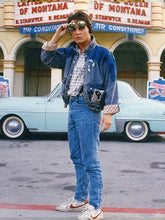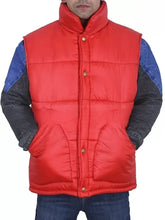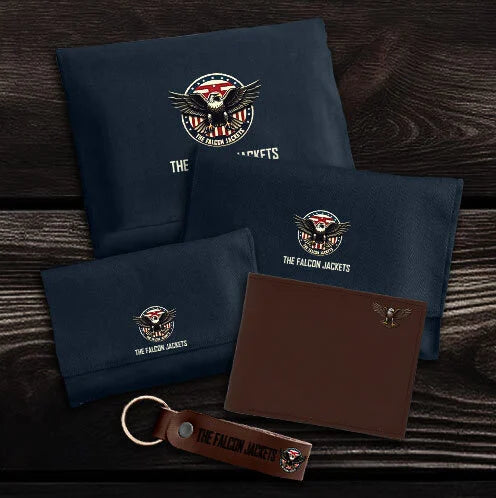Back to the Future Jackets: What’s Real, What’s Rubbish, and How to Spot the Difference
You’ve seen it—the red-and-grey jacket Marty McFly wore in Back to the Future Part II. Sleek, futuristic, somehow both retro and ahead of its time. Or maybe it’s the classic blue denim from the first film—the one he’s wearing when he skates past the clock tower. Either way, you want it.
But here’s the thing: 9 out of 10 “Marty McFly jackets” online? They’re not even close.
I’ve lost count of how many customers have messaged me saying, “The collar’s all wrong,” or “This red looks like ketchup,” or “Why does it smell like a car seat?” They ordered what looked like a screen-accurate replica, only to get a costume-store afterthought.
So let’s fix that. No fluff. No marketing speak. Just a straight-up breakdown of what makes a Back to the Future jacket actually match what Michael J. Fox wore—and what to avoid like a DeLorean running out of plutonium.
First—Know Which Jacket You Actually Want
Marty wore two main jackets that people chase today. Mixing them up is the first mistake.
-
The 1985 Denim Jacket: Think Part I. Blue, slightly faded, shirt-style collar, chest pocket, button cuffs. It’s basically an ‘80s workwear staple—nothing flashy. Often called the “Marty McFly denim jacket,” but it’s really just a well-worn classic.
-
The 2015 Future Jacket: From BTTF Part II. Two-tone: crimson red on top (shoulders, chest, sleeves), slate grey below. Zipper down the front, but with hidden buttons underneath. Quilted cuffs. Viscose lining. This is the one everyone gets wrong.
There’s also a brown leather western jacket from Part III, but it’s rarely replicated—and not what most people mean when they search “Back to the Future jacket.”
The Devil’s in the Details (And Most Sellers Ignore Them)
Screen accuracy isn’t about slapping on red fabric and calling it a day. The original costume designers—Deborah Lynn Scott and her team—were meticulous. Here’s what they actually used:
-
Collar: The 1985 jacket has a shirt-style collar, like a regular button-down. Not ribbed. Not stand-up. If it’s stretchy or knit, it’s wrong.
-
Lining: Both jackets (especially the 2015 version) used viscose lining—soft, breathable, with a subtle sheen. Not polyester. Not “satin.” Viscose feels like luxury, not plastic.
-
Closures: The future jacket uses a zipper with a concealed button placket beneath. Some replicas skip the buttons entirely—big red flag.
-
Pockets: Two slanted waist pockets + one chest pocket on the left. Not symmetrical. Not patch-style. Angled, functional, clean.
-
Cuffs: On the 2015 jacket, they’re quilted—tiny diamond stitching. Miss that, and it’s just another generic sci-fi coat.
And the colour? Don’t trust your screen. The red is deep, slightly muted—not fire-engine. The grey is cool, neutral—never blue-tinged.
Real Leather, Faux, or PU? Here’s the Truth
Let’s clear this up once and for all: the 2015 jacket was never real leather.
On set, they used PU leather (polyurethane)—lightweight, flexible, and consistent under hot lights. It also aged better during long shoots. So if a seller’s pushing “genuine leather” as “more authentic,” they’re selling you a premium version, not a screen-accurate one.
That said—real leather versions do exist now, and they’re fantastic if you want something durable for daily wear. Just know: it’s an interpretation, not a replica.
For true accuracy? Go PU. But make sure it’s high-grade PU, not the stiff, peeling kind you find in cheap Halloween costumes. Good PU should drape like fabric, not crack like vinyl.
How to Vet a Seller (Without Wasting Your Cash)
Before you buy, ask yourself:
-
Do they show close-ups of the collar, lining, and cuffs?
-
Do they mention viscose lining specifically?
-
Is the red/grey split clearly shown at chest level—not waist?
-
Are there real customer photos, not just studio shots?
If the answer’s no to any of these, keep looking. Reputable makers—especially those catering to collectors—will include side-by-side comparisons with film stills. They’ll even send fabric swatches if you ask.
FAQs: Straight Answers to Real Questions
What’s the difference between the 1985 and 2015 Back to the Future jackets?
The 1985 version is a standard blue denim jacket with a shirt collar and button closures. The 2015 jacket is a two-tone red-and-grey design with a zipper, hidden buttons, quilted cuffs, and viscose lining—meant to look like futuristic casual wear.
Is the Marty McFly jacket made of real leather?
No. The 2015 future jacket used PU leather on screen. The 1985 jacket was cotton denim. Real leather versions are modern upgrades, not screen-accurate.
Why do some “Marty jackets” have rib-knit collars?
Because they’re mislabeled. Marty’s 1985 jacket has a flat, point collar like a work shirt. Rib-knit belongs on bombers—not BTTF.
Can I wear the red/grey jacket casually?
Yes—if you balance it. Pair it with black jeans, white trainers, and a plain tee. It’s bold, but not costume-y when styled right.
What’s the best material for the lining?
Viscose. It’s breathable, soft, and matches the original. Avoid polyester—it’s shiny, hot, and feels cheap.
Are there official Back to the Future replica jackets?
Universal has licensed limited runs over the years, but most accurate replicas come from independent makers who study original props and production notes.
How do I care for a PU leather movie jacket?
Wipe with a damp cloth. Never machine wash. Store on a wide hanger. Keep away from direct sunlight—it can dry out the material over time.
Final Word
A real Back to the Future jacket isn’t just a novelty. It’s a piece of design history—crafted to reflect character, era, and imagination. Whether you’re after the grounded cool of 1985 or the optimistic futurism of 2015, getting the details right turns a costume into a keepsake.
And if you’re into this level of screen-accurate craftsmanship, you might also want to explore our Back to the Future collection—where comic book style meets wearable reality.
No algorithms. No filler. Just what works.
— Written by someone who’s returned three “almost-right” jackets and finally found the one that matched the screen.


